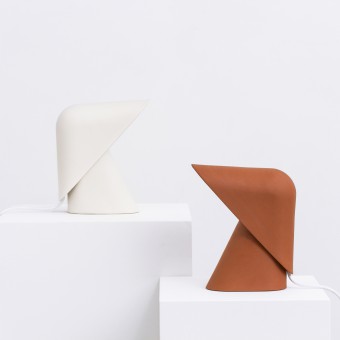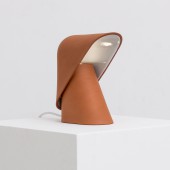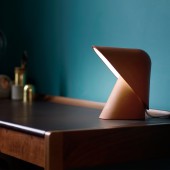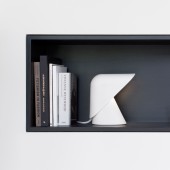K Table Lamp by Andy Vernall |
Home > Winners > #55970 |
 |
|
||||
| DESIGN DETAILS | |||||
| DESIGN NAME: K PRIMARY FUNCTION: Table Lamp INSPIRATION: The main source of inspiration was the traditional process of slip casting. The days of thriving British manufacture have sadly slipped away, a fact that pushes Vitamin to empower the remaining British tradesmen with their ranges, bringing manufacture closer to home. The brief set internally by Vitamin was to fuse traditional British processes with contemporary form to produce an iconic yet unobtrusive table lamp at an accessible cost. UNIQUE PROPERTIES / PROJECT DESCRIPTION: The K Lamp is a table lamp with an iconic, memorable silhouette created totally from ceramic. Designed to subtly compliment a contemporary space, Vitamin wanted to create a design which simultaneously simple and unique. OPERATION / FLOW / INTERACTION: The base form houses the lamp and the shade gently reflects the light into the room. This dispersed glow is achieved by an LED bulb allowing the lamp to be used in both ambient and working situations. PROJECT DURATION AND LOCATION: In 2014 Vitamin set themselves the task of designing a lamp whose form was created totally from ceramic. The project was completed when the lamp was released at Design Junction September 20th 2014. FITS BEST INTO CATEGORY: Furniture Design |
PRODUCTION / REALIZATION TECHNOLOGY: . The lamp is slip cast - a technique developed in Great Britain by a 23 year old ceramics pioneer named Ralph Daniel in 1743 for the mass-production of pottery and ceramics, especially for shapes not easily made on a wheel. The process is familiar to Vitamin- who were involved with the uprising of British contemporary ceramics in the early 2000s. The link to this movement forged strong relationships with British tradesmen in the hub for ceramics within the UK that still run strong today. SPECIFICATIONS / TECHNICAL PROPERTIES: 95mmx 195mm x 240mm TAGS: ceramic, terracotta, lamp, contemporary, slip-cast, earthenware, LED, light, craft RESEARCH ABSTRACT: - CHALLENGE: - ADDED DATE: 2017-02-28 18:58:30 TEAM MEMBERS (1) : IMAGE CREDITS: Andy Vernall, 2016. |
||||
| Visit the following page to learn more: http://store.vitaminliving.com/ | |||||
| AWARD DETAILS | |
 |
K Table Lamp by Andy Vernall is Winner in Lighting Products and Fixtures Design Category, 2016 - 2017.· Read the interview with designer Andy Vernall for design K here.· Press Members: Login or Register to request an exclusive interview with Andy Vernall. · Click here to register inorder to view the profile and other works by Andy Vernall. |
| SOCIAL |
| + Add to Likes / Favorites | Send to My Email | Comment | Testimonials | View Press-Release | Press Kit |
Did you like Andy Vernall's Lighting Design?
You will most likely enjoy other award winning lighting design as well.
Click here to view more Award Winning Lighting Design.








